Kea: chops up sheep, destroys cars, and steals things (14 photos)
These birds use their genius to do evil. 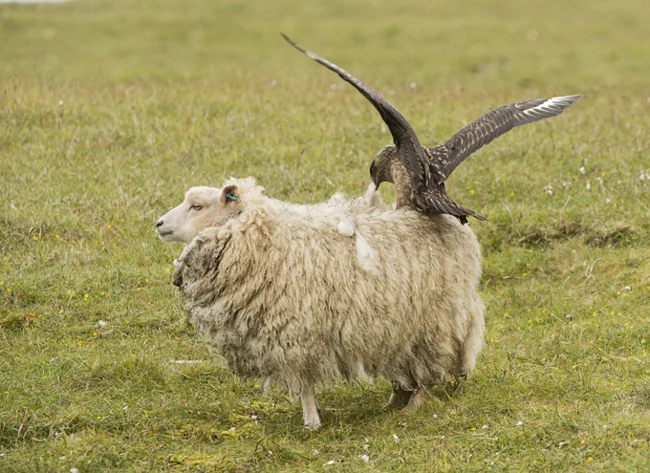
The birds slash sheep, break everything around them, and steal—just because they can. It's like giving a five-year-old a screwdriver, a hammer, and free rein. He doesn't mean to be mean; the little genius is just curious about how things work! 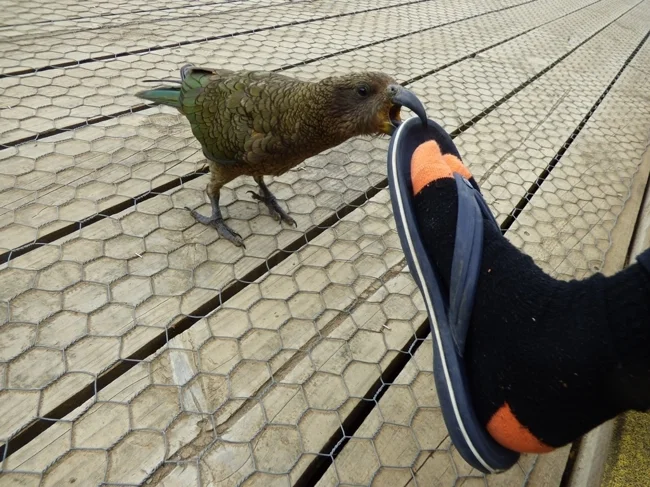
The first one up, the first one gets the slippers! I'm standing, and you're sitting. Give me your bast shoe!
In their native New Zealand, keas are known as "alpine clowns." Despite this, these birds are quite modest in appearance, especially by parrot standards. They don't have a long tail, eye-catching feathers, or a stunning crest. Just a predatory, hooked beak and greenish-brown feathers all over their body. The thing is, these birds shock audiences not with their appearance, but with their actions. Anyone who's seen a kea show doesn't laugh at the circus! 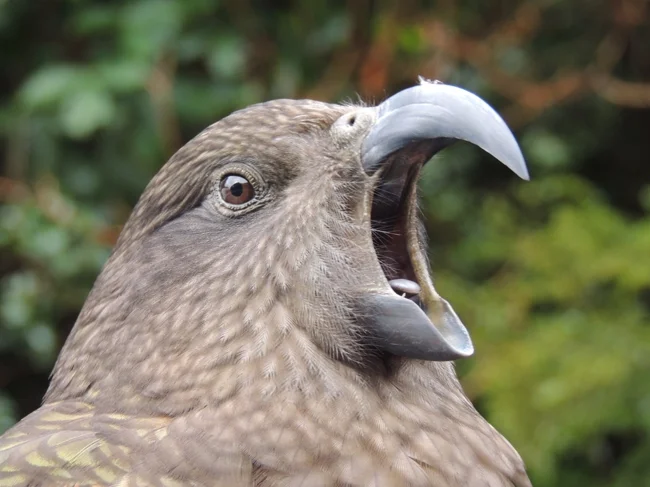
You could open a beer with that beak!
There's little fun in their actions. At least for those the kea has chosen as its "victim." The birds literally dismantle tourists' cars, screw by screw: they rip off window seals, wipers, bite off antennas, and break side windows. They don't stand on ceremony with hikers either: the birds tear apart tents, steal food, and carry off anything that's not properly stored. Sometimes these are shiny trinkets. Sometimes they steal valuable documents. A kea stole the passport of an unfortunate British tourist. He was never able to get it back. Sometimes it's the equipment. In 2022, a GoPro was stolen from a family of tourists. The camera was found, and the owners received aerial footage of the national park as a gift from the feathered clown. 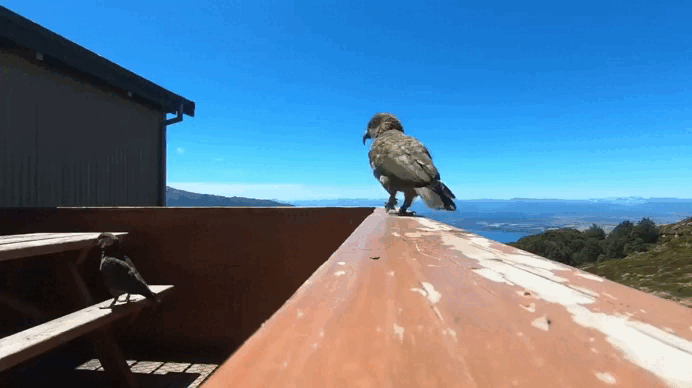
The very moment the kea stole the camera.
But all this is just playful pranks. In the pastures, the kea turns into a vicious joker. Unlike other parrots, the alpine clownfish has become an active predator. And he doesn't hunt just anyone, he hunts sheep! Of course, a bird weighing a kilogram can't even snatch a newborn lamb. But why kill and carry something off when you can set up a buffet right on the live prey? 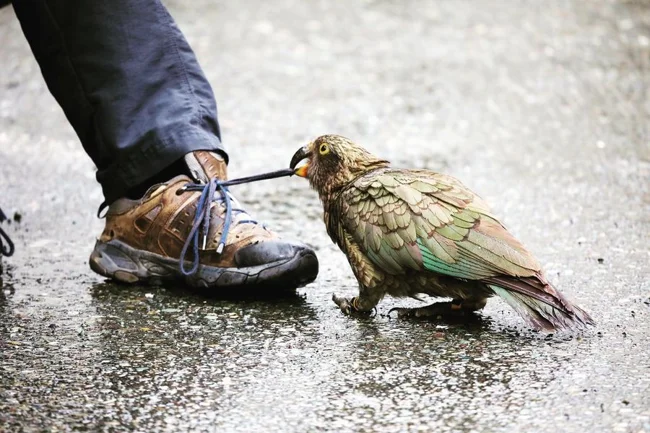
Keas don't hunt people. At least not yet...
The birds perch on the sheep's backs, pluck the wool, and feast. Their sharp beaks prove very useful—they're so handy for ripping chunks of meat and fat from the ram's back! Naturally, after such a feast, the ungulates become sick and even die. Farmers became so hostile to the birds that, for a time, bounties were offered for the dead parrots. 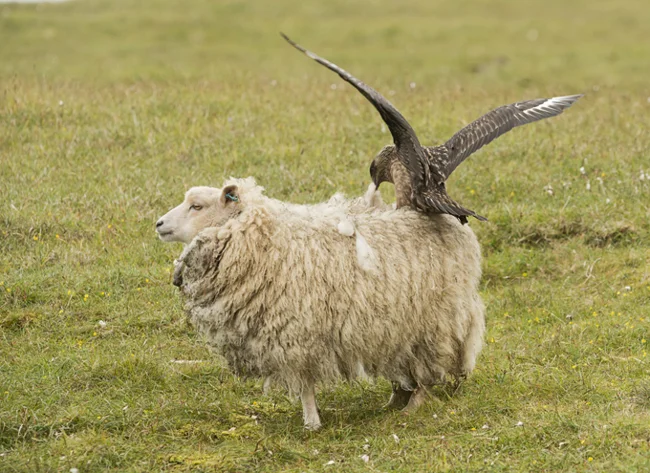
Perhaps the most harmless shot of a kea attacking a sheep. We won't show any truly brutal footage!
This destructive clown show first attracted tourists, and then scientists got involved, conducting all sorts of experiments with the birds. And here's the paradox: the chaos the keas wreak is the result of their brilliant minds! After numerous tests and experiments, it turned out that keas aren't just pests, but some of the smartest birds on the planet—on par with the famous New Caledonian crows, African grey parrots, and cockatoos. And what's more, keas! Experiments have shown that their cognitive abilities are comparable to those of human children! 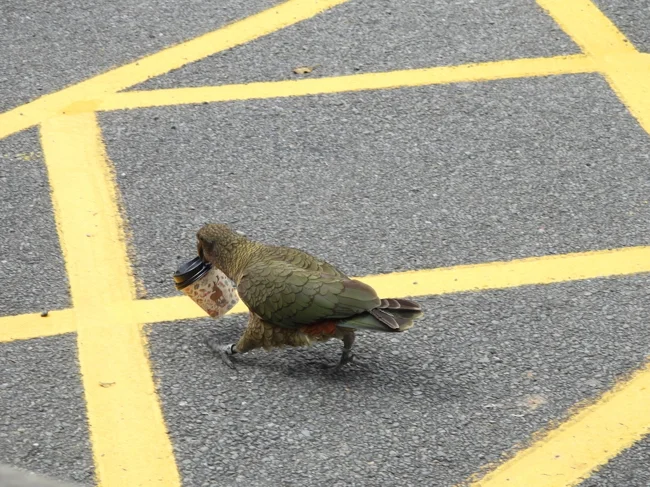
Robbery is robbery, but coffee is on schedule!
In reasoning tasks, these feathered Einsteins confidently make choices based on probability, that is, they understand where the best chance of getting a treat is—just like chimpanzees or children. In self-control tests, they reject quick rewards in favor of more valuable treats that require a wait. They can endure for up to three minutes—not everyone exhibits such endurance! And in teamwork experiments, keas wait for a partner and pull a rope in sync to get food together—just like primates and elephants do. 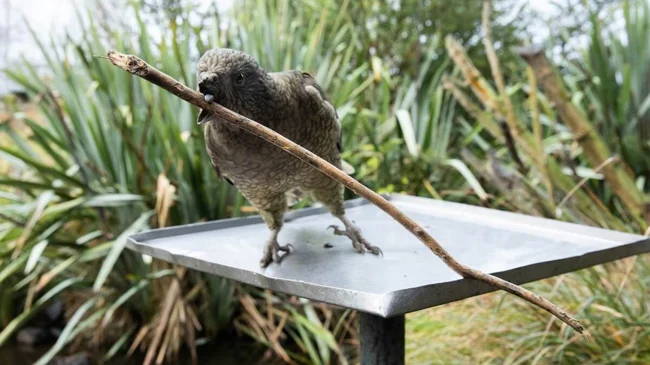
A stick in the eye, or will you give me a treat?
Furthermore, it turns out that humans are to blame for the keas turning from obscure birds into vicious pests. Before humans settled in New Zealand, the parrots inhabited the plains and forests. But with the arrival of colonists, trees were cut down for agriculture, the plains were plowed, and the birds were forced to move to the mountains. 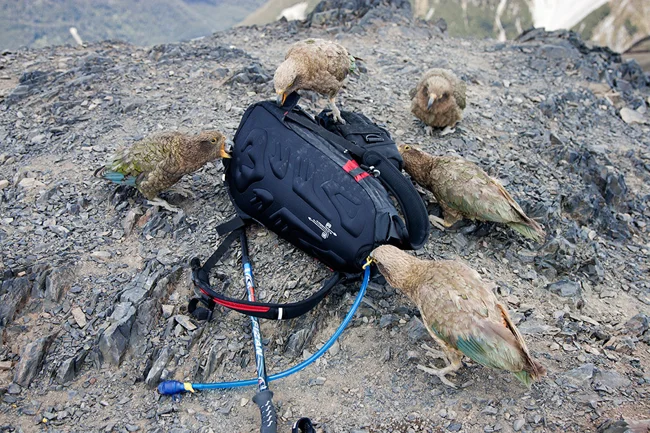
— Guys, there's some strange, unknown thing here, what should we do with it? — Gut it!
Their high intelligence helped them adapt to their new habitat. These birds are omnivores—they can easily feed on seeds, fruits, larvae, carrion, and freshly caught meat. Therefore, they survived the change of habitat relatively unscathed. 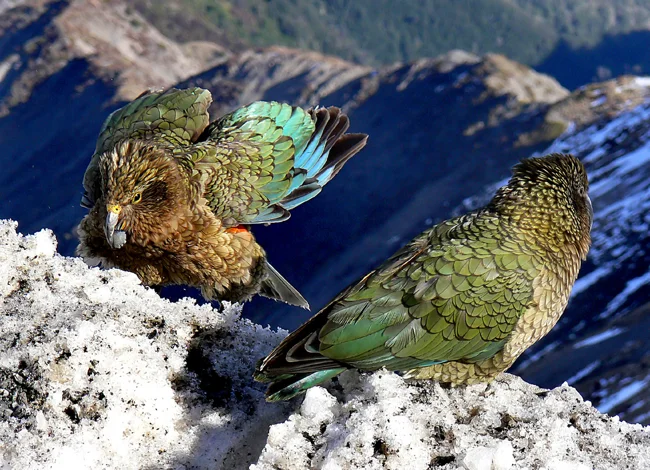
Did they think moving to the mountains would kill us? But no, it made us stronger!
Reproduction also proved to be a breeze. Kea have learned to build nests in rock crevices, under tree roots, and in burrows, which can reach depths of up to 7 meters. The female usually sits on the nest—her job is to incubate the chicks for a month. The male guards the family and provides food. The bravest guys take on responsibility for several females at once. It's risky, but the result is more chicks. Especially since females lay eggs every few years, not annually like most birds. 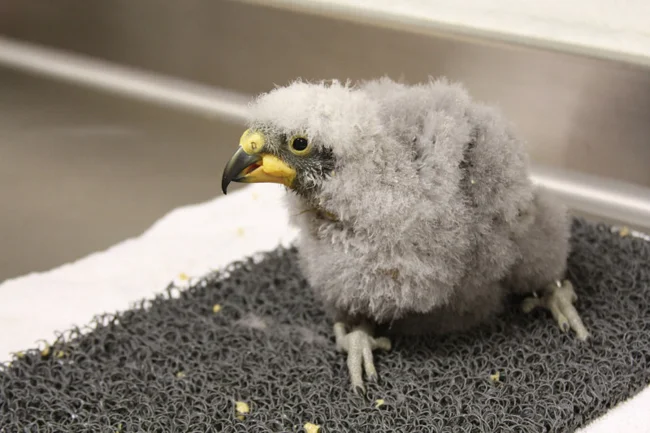
That dust bunny behind the closet. It hadn't been cleaned for so long that it came to life and gained consciousness.
After hatching, the young remain in the nest, fully supported by their mother and father, for up to three months, which is quite a long time for parrots. But even after the chicks have fledged and learned to forage for food on their own, they remain with their parents. That's why such friendly family flocks of birds are often found. Their cohesion and organized lifestyle helped these birds adapt even to harsh mountainous regions. And when civilization arrived in New Zealand, the kea's life became a celebration! 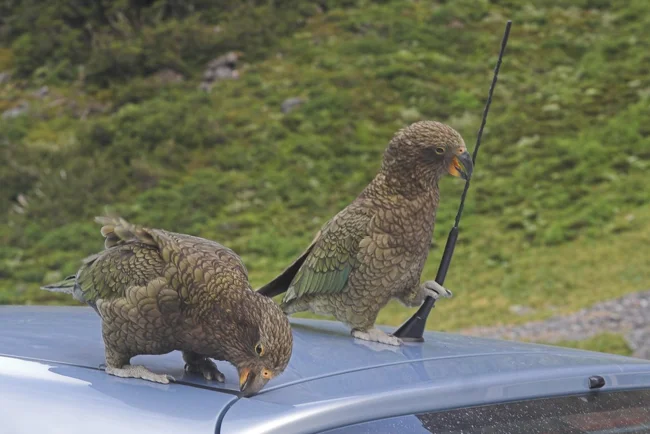
Destroy, order sucks! Smash, smash, shake your empty heads!
First, farmers appeared, grazing sheep on the mountain slopes. Using their ingenuity, the birds exploited this new source of fat and meat. Then big cities appeared. Garbage cans turned into a larder of food. And then came tourists. You didn't even have to think too hard—people were stuffing treats into their beaks! 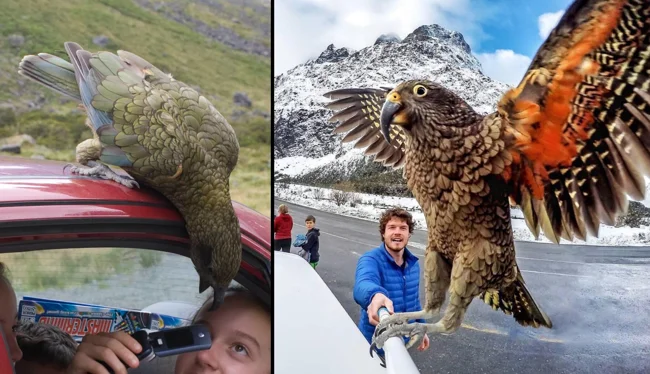
Now feeding parrots is prohibited in all tourist areas. But that doesn't mean keas can't get food by force!
Keas already had the makings of feathered geniuses without humans. But with our arrival, the birds have freed up a lot of resources for their development. Food has become more nutritious, and the time it takes to obtain it is minimal. This means there's plenty of opportunity to fool around! A genius mind always needs something to occupy it. So, birds learn to tinker with cars, pick locks, and open gas tanks. Not only is it fun, but if you're lucky, you might even get something tasty! 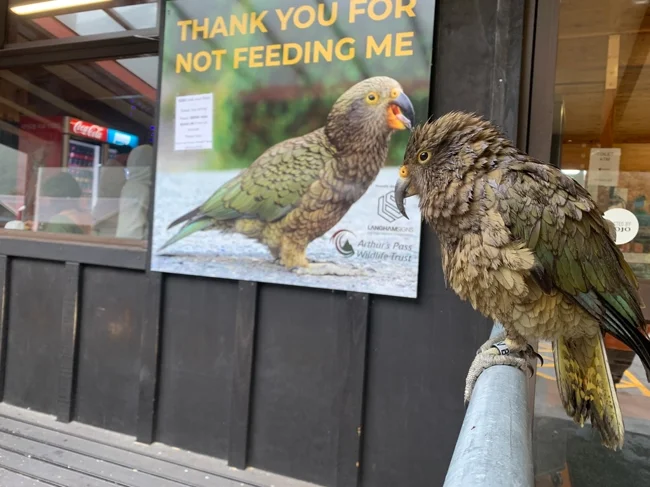
It's a good thing keas can't read. Otherwise, this sign would have been quickly disposed of!
But most importantly: all the mischief the keas cause goes unpunished! The birds are protected by the state—they can't be killed. They get away with expensive car repairs. Farmers receive compensation for attacks on sheep. And for tourists, the keas have become a living attraction.






























